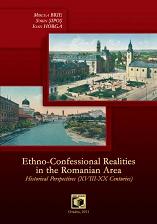Confessionalisation and Community Sociability (Transylvania, 18th Century –First Half of the 19th Century)
Confessionalisation and Community Sociability (Transylvania, 18th Century –First Half of the 19th Century)
Author(s): Barbu StefanescuSubject(s): Politics / Political Sciences
Published by: Editura Universitatii din Oradea
Keywords: community; confession; alte rity; fear; rural; sociability
Summary/Abstract: There are always potential dangers of disintegration threatening the community solidarity. There are several factors acting towards disintegration according to the wish of a Divinity often angry because of excessive human sins. The anger may be expressed as a punishment from the point of view of peasant understanding both directly, by means of power, or indirectly, by setting villain forces free. Opposition against a negatively perceived alterity considered dangerous and attempting to community assets and cohesion is always an opportunity for the members of traditional communities to stick together against possible aggressions. A new form of alterity is confessionalisation, a phenomenon occurring at the dawn of the 18th century within Romanian communities. The crash of the confessional monolith disoriented the Romanian community and brought about reluctance and condemnation.
Journal: Eurolimes
- Issue Year: 2011
- Issue No: Suppl02
- Page Range: 15-27
- Page Count: 13
- Language: English
- Content File-PDF

